Pursuing Toxin-Free Water
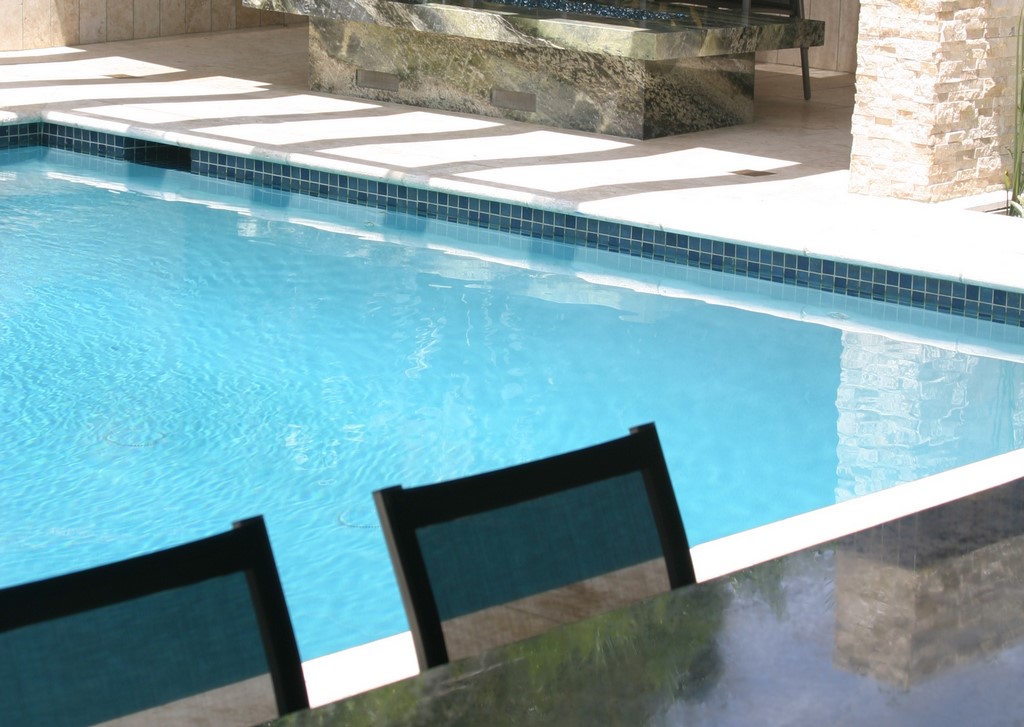
 For years,John Cohenhas dedicated himself to meeting the needs of clients averse to using traditional sanitizers. As he reports in this compilation of three recent articles — gathered together here for your forwarding convenience — his quest is all about mirroring natural systems.
For years,John Cohenhas dedicated himself to meeting the needs of clients averse to using traditional sanitizers. As he reports in this compilation of three recent articles — gathered together here for your forwarding convenience — his quest is all about mirroring natural systems.
Part 1: Nature’s Blueprint
When I first became active in the pool industry back in the early 1970s, there was a lot of talk but almost no options when it came to “alternative sanitizers.” Manufacturers were looking into ionization, ozonation and any form of disinfecting chemistry that didn’t involve the use of chlorine.
I became interested in these possibilities and carried them to my clients — and every one of them was interested. Some of them simply disliked chlorine for whatever reason; others wanted an alternative because they had either internal or external reactions to chlorine and wanted a different sanitizer choice – or would find a completely different way to spend their money, perhaps on a boat or a fancy car.
As we’ll explore in the text that follows in Part 1of this multi-article series on the subject, I had my own reasons for wanting to indulge my clients’ desire for a non-toxic approach to pool-water treatment. We’ll explore that background here, then move on next time to broader motivations for stepping away from conventional water treatments. Then, in Part 3, we’ll examine systems and components I’ve found to be most effective in making my toxin-resistant clients happy.
SETTING THE STAGE
When I was a child, my family often included visits to natural hot springs in our wilderness journeys. Since then, I’ve passed my love of these beautiful geothermal areas on to my children, who now take their friends to those same special places.
Back then, swimming in friends’ backyard pools would cause my hair to turn green and my eyes to burn. The odd thing was that this was accepted as the norm, and nobody (including me) ever focused on why this backyard experience was so different from anything I’d ever encountered in a lake, the ocean or those extraordinarily healthful hot springs.
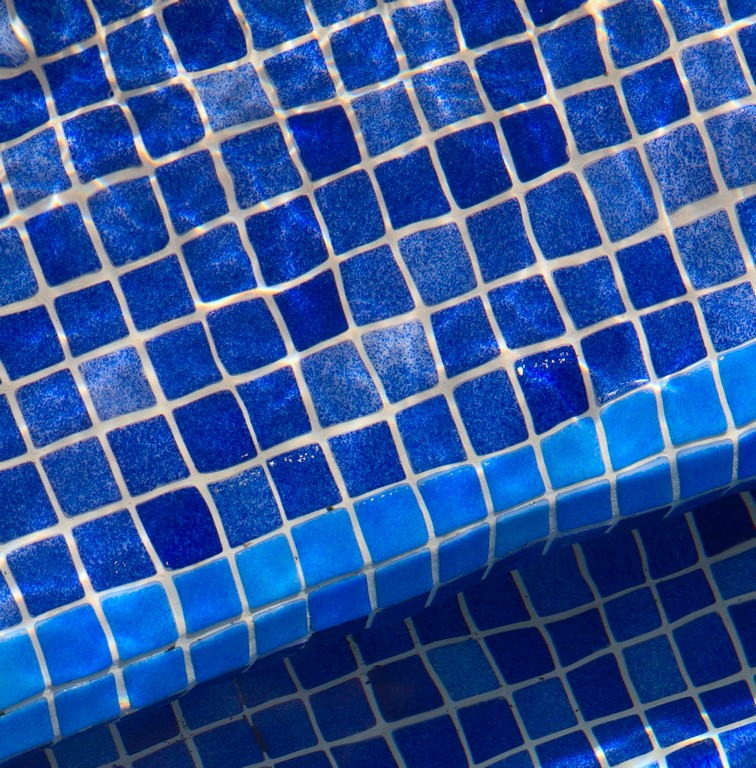 Fast forward to a Western Pool & Spa Show I attended in the mid-1990s, where I remember an instructor saying, “Don’t think of a pool like the human body.”
Fast forward to a Western Pool & Spa Show I attended in the mid-1990s, where I remember an instructor saying, “Don’t think of a pool like the human body.”
That didn’t sit well with me. My oldest daughter, Napali, contracted a rare autoimmune disease when she was 13 in 1990. By the time she was 19, she had lost function in both kidneys and has survived through dialysis ever since. As part of the difficult process of understanding what was happening to her, I learned all I could about kidneys and came to appreciate the fact that they’re among the most advanced filtration systems on the planet.
As sophisticated as it is, kidney dialysis removes only about 10 percent of potassium and other inorganics compared to a healthy kidney. And it all started me thinking: Alongside my awareness of the healthful properties of hot springs and of my daughter’s failed kidneys as well as my familiarity with pool-water purification systems and the problems they have, my unvoiced response to the instructor’s pool show lecture was a frustrated, “Why the hell not?”
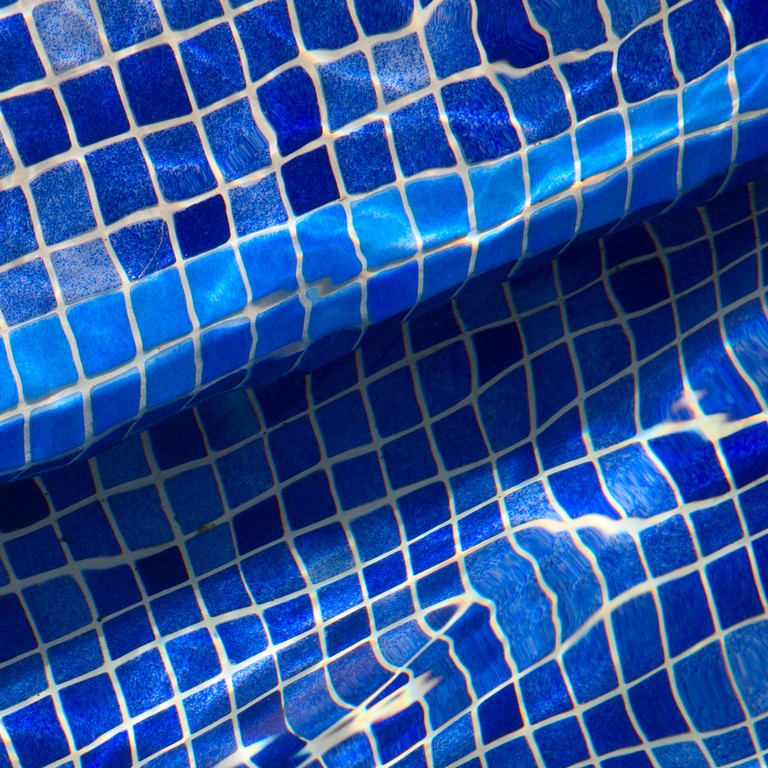 From that point on, I started looking at pool filtration as an evolving yet still archaic attempt to replicate key functional aspects of the human kidney – a flawed mirror of how the human body purifies its internal liquids. I began to perceive the clogging of a pool’s filter media and having pool gunk imbedded deep into the fabric of filter grids or cartridges or sand beds to the point they no longer function as being similar to the design and function (and possible failure) of the human kidney.
From that point on, I started looking at pool filtration as an evolving yet still archaic attempt to replicate key functional aspects of the human kidney – a flawed mirror of how the human body purifies its internal liquids. I began to perceive the clogging of a pool’s filter media and having pool gunk imbedded deep into the fabric of filter grids or cartridges or sand beds to the point they no longer function as being similar to the design and function (and possible failure) of the human kidney.
Since then, I’ve found other analogies: Scientists at the Scripps Institute, for example, were sstartled to find that, within our human circulation systems, atherosclerotic plaques internally actually generateozoneto attack cholesterol and other oxidation products. They also note that white blood cells, when stimulated by infection, produce hydrogen peroxide! These are the sorts of associations that demonstrate that the most economical sanitization formats on the planet will ultimately be revealed within our own cells – nothing wasted, everything used.
The micro-format purification systems that are operating within us are real and can serve as models for what we do with watershapes. In other words, the offhand comment made by the pool-instructor guy was complete and utter nonsense.
FINDING ANALOGIES
One more parallel, this one a bit more practical: Within our arteries, there is no wasted motion. For blood as with water in our pool-piping systems, efficient circulation with no unnecessary friction is the order of the day. So consider: There are 62,000 miles of blood vessels in our bodies, and there can be no red lights, no 90-degree plumbing turns, as our blood cells pass through our bodies to keep us supplied internally with oxygen. And so magnificent is our red blood cell design that they are not specifically dedicated to any particular organ – otherwise, there would be system-wide traffic jams with fatal consequences.
In addition, we can find these analogies beyond pools. Consider the work of visionary architects who recognize the fact that buildings are growing taller but that our transportation systems remain flat on the ground, fairly well trapped in two-dimensional space. They see the ensuing traffic and congestion and are exploring alternative ways of looking at how human beings move, think, acquire and interact.
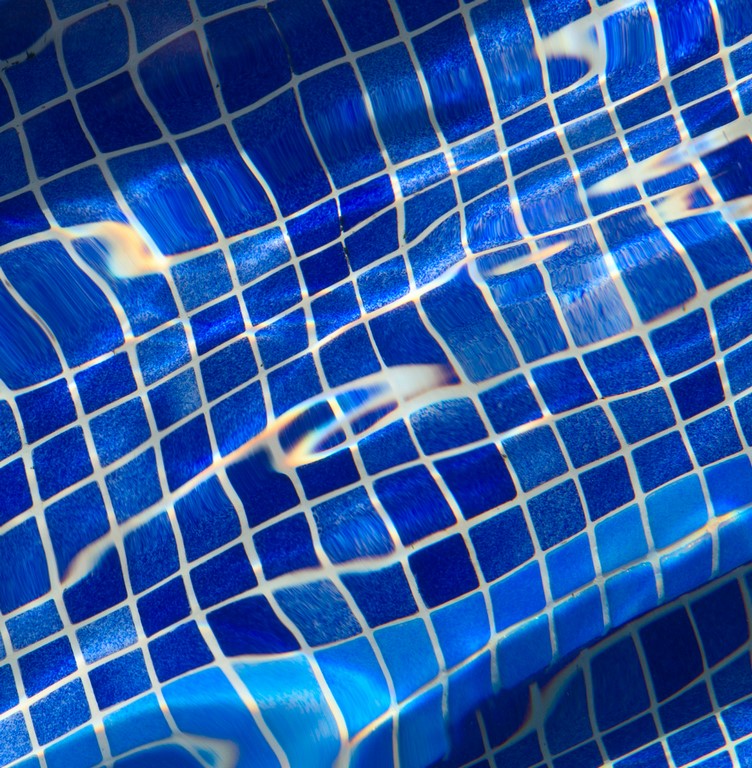 Translating vision into action in this context calls on us to improve the world and augment a body of knowledge that reflects the best thinking of all centuries leading up to the present. To me, this is irresistible motivation: My desire to contribute to future pathways, futuresolutions, has led me to research, experiment and explore non-toxic approaches to pool water chemistry for more than 30 years.
Translating vision into action in this context calls on us to improve the world and augment a body of knowledge that reflects the best thinking of all centuries leading up to the present. To me, this is irresistible motivation: My desire to contribute to future pathways, futuresolutions, has led me to research, experiment and explore non-toxic approaches to pool water chemistry for more than 30 years.
To me, it wasneveracceptable to create a big, beautiful Tuscan-style poolscape or a giant rock-grotto pool if the net result would be having my clients, their families and friends jump into a chemical vat. On occasion, I’ve even reminded some of them that if we don’t take another approach, they’ll be swimming with something that was used as a World War I-vintage chemical weapon – not to mention the chemical foundation for DDT and Agent Orange.
That’s a harsh way to put it, but it’s startling truths of that kind that help my clients focus as I do and open themselves to thinking about other approaches.
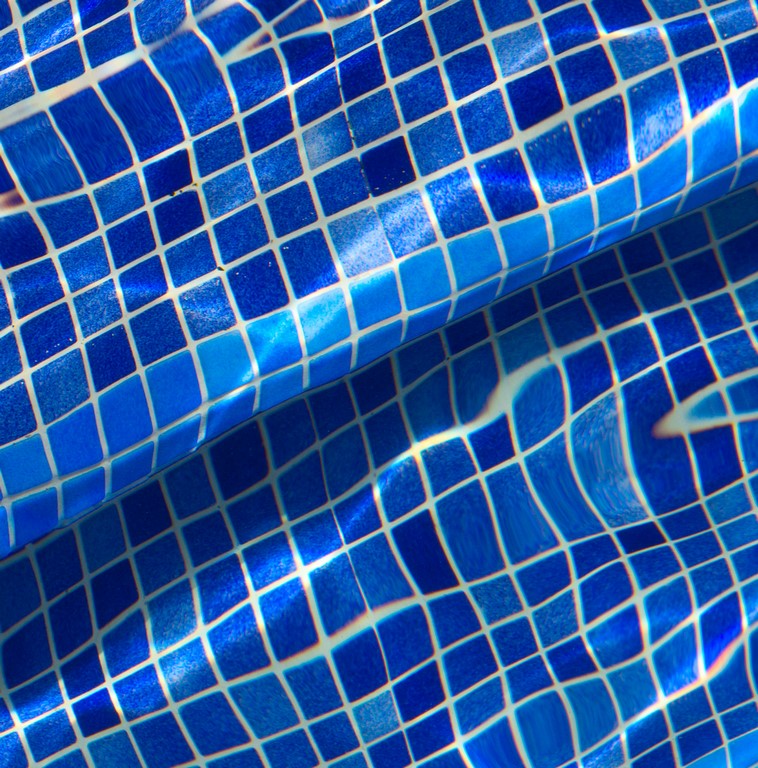 And it’s not as though our industry hasn’t experienced changes in the way pool professionals think. Not long ago, pools were built with heat returns on the surface, small pipes, oversized pumps, single-point floor drains, high-voltage underwater lights, three-bar bond beams, no grounding systems and listless circulation systems. All those things are now totally uncool, and it’s my contention that toxin-based sanitizing systems should be next in line to fall out of favor.
And it’s not as though our industry hasn’t experienced changes in the way pool professionals think. Not long ago, pools were built with heat returns on the surface, small pipes, oversized pumps, single-point floor drains, high-voltage underwater lights, three-bar bond beams, no grounding systems and listless circulation systems. All those things are now totally uncool, and it’s my contention that toxin-based sanitizing systems should be next in line to fall out of favor.
As water-oriented professionals, it’s time for us to look at the way nature purifies, disinfects, and regenerates water in light of how the human body cleanses and purifies itself internally, using both to guide us in making our pool systems function safely in non-toxic ways. Physicists work with these sorts of analogies in developing computer chips and batteries that mimic the ways in which our brains work. Why not us?
If we examine the human-body analogy, for instance, and simply extend the observation that we each contain multiple filtering systems, multiple sanitizing systems, multiple intakes and multiple returns, it would represent a major evolution in the way we look at pool systems. To be sure, this would likely result installations that cost more up front, but the offsets in terms of health benefits and reduced chemical and energy consumption will ultimately balance things out.
A PERSONAL MISSION
I began my exploration of non-toxic water systems with hydrogen peroxide, ionization and ozonation – that is, the use of ultra-fine particles of copper, silver and zinc to disinfect water as it passes through the circulation system along with contact-only ultraviolet disinfection (this was well before corona-discharge systems were available in the pool marketplace) and the oxidizing capacity of hydrogen peroxide.
It made sense to me because ionization is the foundation of the way the sun works, with the sun in turn activating our genes and sustaining human life through countless generations. From my perspective, I saw this macro-phenomenon as an endorsement of the micro-phenomenon I was working with in my clients’ pools. It looked like the right path — and it helped that I had a client who had suffered with psoriasis for 40 years and found total relief through bathing in ozonated water.
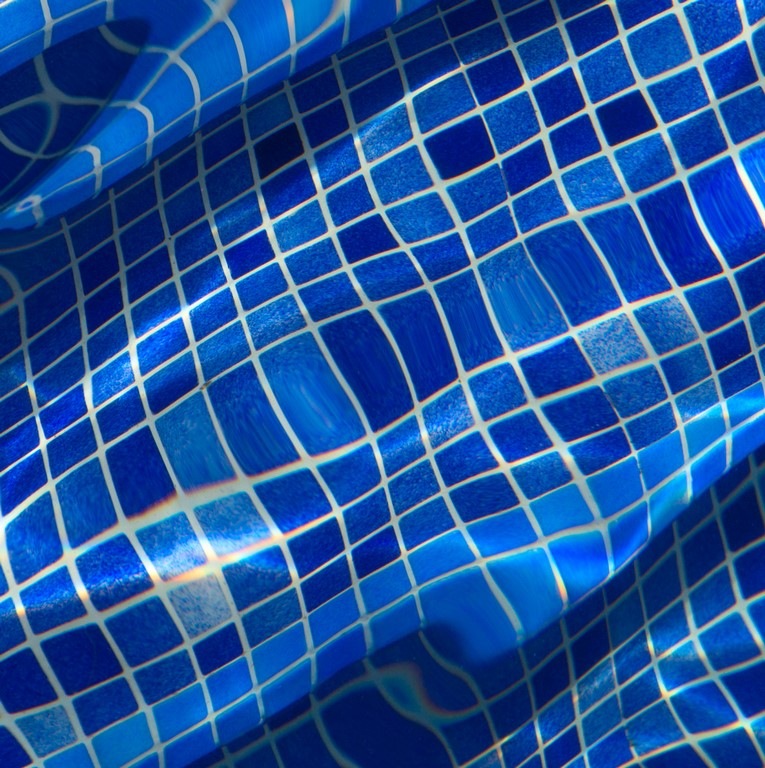 But there’s an important distinction here: Open bodies of water are vastly active in biological and physical terms, but enclosed swimming pools (and human bodies) require much more precise approaches to purification. In the human body, for example, it’s about working with vast quantities of oxidation agents, enzymes, endorphins, pH levels and hormones. In a pool, it’s about algae, protozoa, amoebas, low voltage mineral charges, oxidation, ultraviolet radiation and movement.
But there’s an important distinction here: Open bodies of water are vastly active in biological and physical terms, but enclosed swimming pools (and human bodies) require much more precise approaches to purification. In the human body, for example, it’s about working with vast quantities of oxidation agents, enzymes, endorphins, pH levels and hormones. In a pool, it’s about algae, protozoa, amoebas, low voltage mineral charges, oxidation, ultraviolet radiation and movement.
In recent years, just as probiotic compounds have been found to be helpful in sustaining the human cardiovascular system, we’re now seeing the use of “probiotic” pool enzymes that break down nitrates, microbes, bacteria, bio-sludge and oils. And these beneficial enzymes are tough, with some tracing their origins to combating the effects of the Exxon Valdez oil spill in Alaska: They are stable and highly resistant to chemicals and extreme conditions, including freezing temperatures, high pH and moving saline water.
But not all recent technological introductions work in terms of non-toxicity: The emergence and popularity of saltwater pools, for instance, is problematic because chlorine is still the sanitizing agent (despite common misperceptions). What’s more, use of these systems can result in the destruction of soil microbes and of beneficial ecto- and endomycorrhizae bacteria – that is, in groundwater pollution – and in damage to just about every material used in pool construction because of salt’s caustic properties.
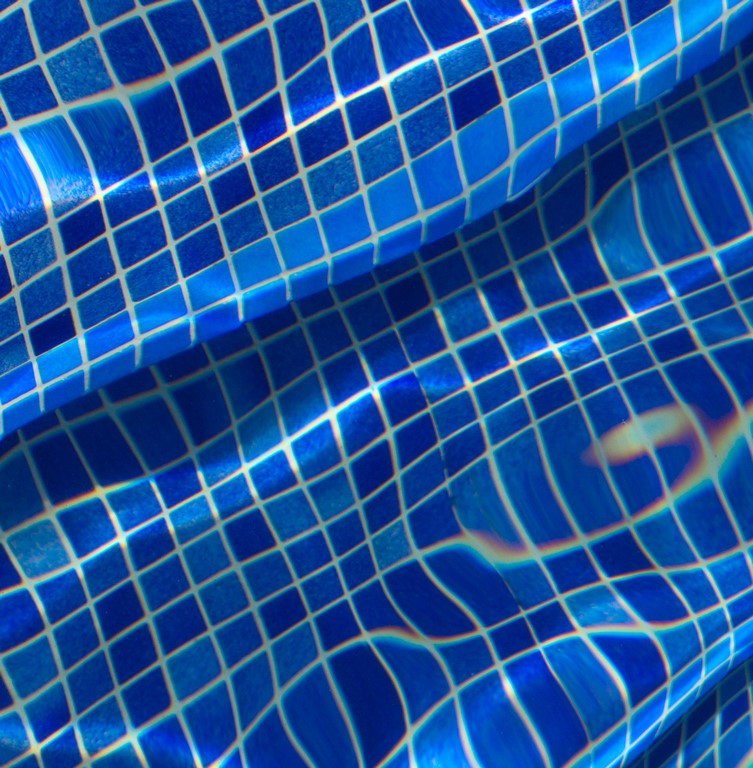 What I’m suggesting here is that the process of taking toxins out of pool systems is evolving and that there will be both bright, leafy branches and dead ends on the evolutionary tree. I would also like to suggest that common sense is involved as well. If you just bought a house with a pool, wouldn’t you immediately want to change the cartridge or filter media so you are not swimming in someone else’s bio-film or filtered waste?
What I’m suggesting here is that the process of taking toxins out of pool systems is evolving and that there will be both bright, leafy branches and dead ends on the evolutionary tree. I would also like to suggest that common sense is involved as well. If you just bought a house with a pool, wouldn’t you immediately want to change the cartridge or filter media so you are not swimming in someone else’s bio-film or filtered waste?
Those biofilms can benastyin a chlorine-treated pool, because free chlorine (HOCl/OCl-) reacts rapidly with the protective outer mucous layer of a biofilm. Consequently, free chlorine is depleted at the surface of the biofilm – and little ornothingis left to penetrate the biofilm and inactivate any bacteria it might contain. In addition, this process zaps any chlorine residual that might be expected to remain in the circulation/distribution system.
The situation is even rougher with chlorine-treated spas. As Robert W. Lowry wrote in an April 2017 article inAqua(“Spa Soup: Why We Dump Spa Water”), “The average person brings 100 million bacteria into the water. These join other living organisms such as biofilm, parasites, virus, algae, mold, mildew and spores. Then we add swimmer waste such as blood, sweat and tears, urine, saliva, mucous and other bodily fluids. Finishing the soup are the man-made products that dissolve off the skin and hair, including creams, oils and lotion, soap, deodorants, makeup, hair products, perfumes and more.”
He goes on to report that “the average spa user sweats up to three pints per hour at 102 degrees Fahrenheit” and notes finally that “The water will also have what are called xenobiotics. This is a catchall term used to describe all the other things that don’t fit into a category, and includes household cleaners such multipurpose cleaners, window and countertop cleaners and so on.” And then there are all of the pharmaceutically active compounds and endocrine-disrupting chemicals.
It’s a toxin-laced swamp, and it’s one we need to clear as an industry and move beyond with all deliberate speed.
TOWARD SAFE WATER
I could go on with reports of other scary chemical and biological guests that gain access to pool water, but you get my point: Whether it’s dioxanes, hexavalent chromium, Teflon byproducts, excessive fluoride or lead, if it is in any way avoidable, controllable and/or removable, there’s much to be said about the value of pursuing methods and technologies that will make pool water safe, trouble-free and a source of collective pleasure rather than of collective concern.
My own experience and research convinces me that I do not want to operate in a situation in which something in the water I leave behind for my clients might cause them harm and bring me heartache on anything approximating the level I experienced through my daughter’s illness. Ifanyof our clients are subjected to having their immune systems compromised or damaged through immersion in the bodies of water we create, that’s too many – and we need to rally and do everything in our power to find alternative approaches that work.
In the next article in this series, I’ll dig more deeply into what I’ve learned through the years and how I’ve translated those concepts into what I consider to be better approaches to pool system design related to water treatment. Believe me, it’s been quite a ride.
Part 2: Interventions
In March 2017, a former employee at Ten Thousand Waves, a Japanese-style spa and resort in Santa Fe, N.M., filed a lawsuit against the company for having exposed him to airborne bacteria that resulted in his contracting a respiratory condition known as Hot Tub Lung.
I hate seeing news items like that one – or this one: Linda Godsey, a 62-year-old woman, died in October 2017 of Legionnaires’ disease, and her family has filed a wrongful-death suit against a hotel in which she’d stayed and where she was reportedly in and out of the pool and hot tub quite frequently.
How do we achieve the sort of advanced filtration and sanitization required to mitigate these problems? As I outlined in Part 1 (above), it is my belief that it involves creatively applying to pools and spas the same perfected processes observed in the human body, an encapsulated vessel of liquid (blood) with a pump (heart), filters (kidneys), pH-regulating systems, balancing mechanisms for electric currents and automatic backwash functions.
This is a line of thinking to which I’ve been deeply committed for more than 25 years, and it’s led to me define a range of approaches and combinations of strategies that have proved useful in giving my clients the toxin-free pool experience they crave.
TRACKING ANALOGIES
As I see it, the human body and nature carry the master blueprints we should follow in pool design and engineering because of the strength of the parallels between our bodies’ micro/internal universe and our pools’ macro/external universe.
Start by comparing, for example, the functions of pool filter grids or sand beds to the functions of our gastrointestinal tracts with their 27 feet of intestines: Both are dedicated, full time, to getting rid of unfriendly intruders. If your gut biome isn’t in good condition, you cannot stay healthy – and the same is true for a pool with a busted filter.
I’ve been exploring this and other body/pool analogies since the 1980s, when I started to understand that pH is essentially a reading of voltage; that processing water in a pool is roughly similar to processing blood in our bodies; and that nature works through waves, frequencies and forms of electrical currents found in our bodies and our watershapes. The universe, in other words, is set up forlife, and its physical processes work just abouteverywhereas a set of balancing, regulatory forces.
 I don’t want to get lost in the science behind all of this, but, briefly, there’s aphysicscomponent: Healthy pool water really does have to do with electricity, magnetism, light and radioactivity – underlying forces that we’ve only begun understanding and using in the past 100 years or so.
I don’t want to get lost in the science behind all of this, but, briefly, there’s aphysicscomponent: Healthy pool water really does have to do with electricity, magnetism, light and radioactivity – underlying forces that we’ve only begun understanding and using in the past 100 years or so.
There’s alsobiology: Our cells are 73 percent water and the human body carries about a trillion bugs that get active when low-oxygen environments develop in our blood and cells. Now think of a stagnant pool: The lower the oxygen content, the faster algae, microbes, anaerobic bacteria and destructive water-born infestations will take hold.
Andphysiology, too: Cells in the human body operate at about 70 millivolts, but when there’s an injury, that level rises, increasing oxygen levels and boosting alkalinity. On the flip side, when the body’s operating level falls to as low as 30 millivolts, sicknesses including cancer can intrude as oxygen levels decline and acidity increases. This is why, in emergency rooms, attending physicians will oftenimmediatelyadminister sodium bicarbonate intravenously, shifting acidic pH to the alkaline side and raising the voltage passing through tissues and cells throughout the whole body to help it heal.
 If that last part sounds familiar to watershaping professionals, it’s because the analogy to pools and spas is so direct. We all worry about pH levels, oxidation reduction potential (measured in millivolts) and management of alkalinity and acidity in all of our projects, doing everything we can to keep these systems healthily balanced.
If that last part sounds familiar to watershaping professionals, it’s because the analogy to pools and spas is so direct. We all worry about pH levels, oxidation reduction potential (measured in millivolts) and management of alkalinity and acidity in all of our projects, doing everything we can to keep these systems healthily balanced.
So let’s assume and accept that oxygen chemistry in the atmosphere, in a cell and in a decontamination process are similar. It takes me back to childhood and my experiences in the mineralized, alkaline waters of hot springs and oceans: Those waters are electrified with healthy currents and provide stimulating, optimal environments.
Now considerClostridium botulinum, a murderous toxin that thrives in the absence of air or oxygen and releases spores that cause botulism. These spores will survive even boiling water, but when salt and other minerals are introduced at low concentrations,C. botulinumslows in growth and stops producing spores. Oceans and hot springs are healthy for us, deadly forC. botulinum. More important to my research, facts like these started unrolling nature’s decontamination blueprint for me.
Beyond the hair-color and itchy-eye issues I noticed as a child, it’s evident that numerous other problems arise when chlorine-treated pool water moves out of balance. Dentists, for example, have observed excessive erosion of tooth enamel, with epidemiological studies indicating that members of swim teams – that is, people who spend unusually large amounts of time in chlorinated pool water – are particularly susceptible to this form of decay.
There’s trouble as well when pH moves out of balance: More than 100 million people in the United States live with various types of diabetes, many of which can be traced to pH imbalances brought on by a lack of exercise exacerbated by acidic diets consisting too largely of highly processed foods. It didn’t take much more than that to convince me that, just as proper pH in the human body is crucial to health, the same is true with pools and spas.
REVISED THINKING
In nature, water is purified as it passes and tumbles over rocks, thereby becoming aerated (increased oxygen content) and coming in contact with minerals (increased electrical activity) while passing through sunlight (ultraviolet disinfection), which creates sanitizing hydroxyl free radicals. It’s an elegant, efficient system that works better than chlorine oxidation.
Think about a rushing, whitewater river streaming down from forested mountains, with their frozen, distilled-water snow packs: Youknowthis water is very pure and oxygen rich. Now consider all of the people these days who want their food to be gluten free, without processed sugars, sprouted first, low sodium and/or containing no-cholesterol fats: These are all substantiated, scientific, beneficial trends that are entwined in our evolving dietary habits. There’s a mirror here, a direct relationship between water purification trends 9(the pursuit of toxin-free pools) and our digestive systems and the way we now look at gluten (glue), pasta (paste), processed sugars (acids), non-soluble fats (cholesterol) and high levels of sodium (insoluble minerals).
 With the ingestion of foods in any of these categories, the flowing mountain stream of our blood vessels and arteries begins to stagnate and develop pockets of fatty plaques that harden and foster all the bad actors that come with low-oxygen conditions. By analogy, the same basic process occurs with pools and spas and underscores the importance of the proper functioning of hydraulics and plumbing in our mechanical water systems.
With the ingestion of foods in any of these categories, the flowing mountain stream of our blood vessels and arteries begins to stagnate and develop pockets of fatty plaques that harden and foster all the bad actors that come with low-oxygen conditions. By analogy, the same basic process occurs with pools and spas and underscores the importance of the proper functioning of hydraulics and plumbing in our mechanical water systems.
When I was six years old, I watched my father attaching wallpaper using a paste he’d made from white flour and water. I was puzzled then because my common sense told me that food isn’t glue, but now I know that white flour is, in fact, a fluid inhibitor that can have negative effects on the body’s circulatory system. It doesn’t take much to see a link between flour and the gunk that impedes flow in pool systems and causes plaque-like scale formations when pH is high and flow is inefficient.
Epidemiologists say that Legionnaires’ disease and even tuberculosis emerge from spas afflicted in this way. Just as low-circulation issues cause multiple types of problems in our bodies and create unhealthy situations for us, poorly disinfected, inefficiently circulating pools and spas can bite us, and hard.
 So here we are, relying on chlorine to kill microbes and bacteria in our pools: Yes, it works onsomeof these hostile entities, but not onallof them. And what about heavy metals, pesticides, nitrates, cosmetics, dissolved suntan oils, chemical products, human secretions, chloramines, organic chlorides, cyanuric acid and other dissolved materials? The list of substances being found in pool water grows daily, and few people recognize just how limited chlorine really is as a purifying agent.
So here we are, relying on chlorine to kill microbes and bacteria in our pools: Yes, it works onsomeof these hostile entities, but not onallof them. And what about heavy metals, pesticides, nitrates, cosmetics, dissolved suntan oils, chemical products, human secretions, chloramines, organic chlorides, cyanuric acid and other dissolved materials? The list of substances being found in pool water grows daily, and few people recognize just how limited chlorine really is as a purifying agent.
Partly, it’s because the chlorine-processing industry is quite effective in keeping attention off of its prized commodity and will go to great lengths to protect its markets. In fact, one such organization threatened the supplier of a component in my toxin-free system with multiple lawsuits and forced the company to replace the word “chlorine” with the term “harsh chemicals” in descriptions of the benefits of its non-chlorinated approach to water treatment.
You wouldn’t think anyone would care all that much about what happens with swimming pools and spas, but just as the medical establishment has so often resisted new approaches and technologies that threaten sales of pharmaceuticals and medical equipment, there are indeed marketplace interests in the pool industry that don’t want change and certainly aren’t encouraging development of alternatives that would take chlorine suppliers’ products out of hundreds of thousands of backyards and commercial aquatic facilities.
CONCEPTUAL CRESCENDO
Emerging concern about the excessive presence of chlorine in our lives is why it’s so frustrating to read that the U.S. Environmental Protection Agency has issued warnings about unacceptable dioxin levels in ordinary, chlorine-bleached white coffee filters – all while consumers are exposed to higher concentrations of chlorine and its byproducts in swimming pools and spas and no action of any kind has ever been taken.
Happily, pregnant women merit some sort of defense. According to the U.S. government, “Swimming is popular among pregnant women because it can ease pregnancy symptoms while helping them maintain their muscle strength and relieve weight-bearing strain on the lower extremities.”
 But, the article goes on, “expectant mothers who swim in chlorinated pools can actually harm their fetuses due to the toxic chemicals like chloroform, formed by a chemical reaction between chlorine and organic matter.” In England, this report led to a movement to reduce the chlorine content of swimming pool water; no similar movement has caught on in the country where the research occurred despite the factallswimmers would be helped, not just pregnant women and their unborn children.
But, the article goes on, “expectant mothers who swim in chlorinated pools can actually harm their fetuses due to the toxic chemicals like chloroform, formed by a chemical reaction between chlorine and organic matter.” In England, this report led to a movement to reduce the chlorine content of swimming pool water; no similar movement has caught on in the country where the research occurred despite the factallswimmers would be helped, not just pregnant women and their unborn children.
The list of concerns goes on: Again in this country, the Centers for Disease Control have studied asthma and respiratory diseases such as epiglottitis, which is a potentially life-threatening inflammatory condition of the cartridge that covers the windpipe. Swallowing too much chlorinated water, they observed, can lead to liver and kidney problems, while sodium hypochlorite found in chlorine and other compounds has the potential to produce liver cancer.
It all boils down to one simple idea: We need water toflushtoxins, not to be full of them! Who wouldn’t want to swim in drinking-water-quality pool water, especially when you consider the fact, discussed below, that we literally drink the water we’re swimming in right through our skin?
 Decades ago, the allowable arsenic level in drinking water was 50 parts per billion. Experts declared this to be unsafe, so the limit was cut to 10 ppb. Why not to zero? It had much to do with existing infrastructure and the cost of making so total a change. Similar compromises have occurred with trimethyl halogens, tetrahydrofuran and bisphenol A despite growing demand from water-consuming citizens who want to live toxin-free.
Decades ago, the allowable arsenic level in drinking water was 50 parts per billion. Experts declared this to be unsafe, so the limit was cut to 10 ppb. Why not to zero? It had much to do with existing infrastructure and the cost of making so total a change. Similar compromises have occurred with trimethyl halogens, tetrahydrofuran and bisphenol A despite growing demand from water-consuming citizens who want to live toxin-free.
And then there’s this: In September 2017, Jim Lauria wrote inAquaabout a 2005 article I recall seeing which declared that up to 85 percent of the chlorine used in a spa without any other water sanitizer is consumed – literally blown away – in the process of oxidation. There was also a 2004 report from an environmental working group that discussed how personal care products were combining with sloughed-off skin cells, hair and oils to form scum, scale and biofilms capable of shielding pathogens from disinfectants.
In October 2017,Aquaquoted Dr. James Amburgey, a former CDC employee and associate professor of civil and environmental engineering at the University of North Carolina in Charlotte as follows: “[I]f you’ve got a 1,000 gallon pool and you filter 1,000 gallons from the pool, theoretically you’ve filtered the pool one time. But in reality you’ve only turned over 63 percent of the volume. That’s because you take some water out and put some back in for every cycle and it all mixes.”
To get all of the water filtered therefore takes aboutseventurnovers. In short, you have a recirculation system that’s only getting 63 percent of the water to the filter and a filter that’s only removing 25 percent of the small particles from that 63 percent. This is what I’d call “low treatment efficiency.”
BUILT-IN EFFICIENCY
As a result of years of reading reports such as those mentioned just above, I have continued my research while installing systems that represent my best understanding of toxin-free solutions and of the overall need for system efficiency.
That’s why, early on, I was so impressed by ozone, an effective, highly efficient oxidizer that gets to work when a common oxygen molecule has three atoms instead of two. Ozone is always present in trace quantities in the atmosphere, put there by the sun, which causes the extra atom to show up via both ordinary ultraviolet radiation and lightning.
 During my early research, I also came across a scientist who had, in observing cavitating water, recognized the creation of hydroxyl free radicals. I’m supposing that this same sort of turbulence is what produces ozone and hydrogen peroxide in our bloodstreams.
During my early research, I also came across a scientist who had, in observing cavitating water, recognized the creation of hydroxyl free radicals. I’m supposing that this same sort of turbulence is what produces ozone and hydrogen peroxide in our bloodstreams.
The possibilities here are fascinating: Neither a pool nor a human body will function for long at an acidic pH of -4 or at an alkaline pH of 9+, but ozone subjected to similar conditions will produce more hydroxyl free radicals and less ozone in the high alkalinity environment – and fewer hydroxyl free radicals and more ozone in very acidic environments. So both major oxidizing components in ozone keep working despite ambient pH – just with shifts in output percentages.
I was beginning to see with increasing clarity that the motion of water, our internal conditions and our pH environments are all tied together in the universal network of waves, frequencies and electrical currents I mentioned above. A healthy, beating heart has its switch in theonposition, pounding away in beautiful balance – and that’s what I wanted to find for my swimming pools and spas.
 So I started thinking in terms of systems so hydraulically efficient that I could run them 24 hours a day at minimal cost; of ozone with its oxidizing capacity 150-percent stronger than chlorine and thousands of times faster-acting; of a system for injecting hydroxyl free radicals into the flow; of an automatic pH-balancing system; of an advanced, low-micron-level multi-filter system that removes all bather waste; and of proper maintenance of mineral content.
So I started thinking in terms of systems so hydraulically efficient that I could run them 24 hours a day at minimal cost; of ozone with its oxidizing capacity 150-percent stronger than chlorine and thousands of times faster-acting; of a system for injecting hydroxyl free radicals into the flow; of an automatic pH-balancing system; of an advanced, low-micron-level multi-filter system that removes all bather waste; and of proper maintenance of mineral content.
Component parts dedicated to all of those purposes are available off the shelf and in some cases have been around for many years. With hyper-efficient hydraulics and sanitizing, I figured I could drive the cost of operation down to a level where non-toxic systems might even have a chance to become the norm.
My drive to succeed was even more energized when the World Health Organization defined the three ways chemicals enter the body – inhalation, digestion and absorption – and I saw that, in swimming pools, all three possibilities exist. Then the American Chemical Society reported that the brominating and chlorinating of pools and spas results in increased disinfection byproducts and DNA-damaging mutagenicity as new tap water transitions to become old pool and spa water.
I had long perceived typical pools and spas as being chemical swamps, but what I had merely considered as questionable environments were now turning out to be hazardous as well.
TURNING THE PAGE
I don’t see this as a situation in which the news about old-school, conventional approaches to pool and spa water treatment will get any better with time. Studies will intensify as greater and more numerous risks are observed, and more negative scientific information will be published as traditional thinking takes its lumps and chlorine’s advocates are increasingly sidelined by the safety, efficiency and healthfulness of toxin-free alternatives.
And let’s not forget that what we do with pool water has technical, technological and commercial implications that go well beyond backyards and public aquatic facilities: From food processing to power generation, there’s plenty of capital and investment behind figuring out efficient ways to decontaminate water and airstreams – and it’s not necessarily there because finding those ways is essential to our survival as a species and a planet.
 As I see it, however, there’s a profound and fascinating interconnectedness between the machinery of life and the mechanics of healthy pools and spas, and I’ve seen and believed in those connections almost from the start of my research. As I declared above, our bodies and Mother Nature offer us the blueprints, and we’ll all benefit if we keep an eye on our internal dynamics and natural water systems as we develop new approaches to water treatment.
As I see it, however, there’s a profound and fascinating interconnectedness between the machinery of life and the mechanics of healthy pools and spas, and I’ve seen and believed in those connections almost from the start of my research. As I declared above, our bodies and Mother Nature offer us the blueprints, and we’ll all benefit if we keep an eye on our internal dynamics and natural water systems as we develop new approaches to water treatment.
Imagine a time when flipping a switch will initiate a special light spectrum that will instantaneously sterilize every drop of water in a swimming pool. Imagine some sort of magnetic system that removes all impurities and turns a pool’s water back into virgin H2O as it passes through the field. Let’s go all the way with this: Imagine that, as you enter a pool’s water, a system reads your molecular signature and a multi-oscillator immediately goes to work in electrically balancing and adjusting your cellular bio-resonance to its perfect operating potential as you swim.
And it’s not all about miracles having to do with the water: Imagine pool floors with substrates that absorb heat and store it in redesigned pool shells – or PVC pipes that will soon be replaced with truly inert alternatives that leach nothing at all into the water.
As I’ll define in detail next time, a less miraculous approach to the water part of this picture has already taken shape – and I know I’m not alone in wanting to treat my clients to the benefits of a fresh, new way to enjoy clear, clean and truly healthy water in their pools and spas.
Part 3: Toxin-Free Choices
Those of you who’ve followed along with this series know how personally I’ve taken my quest to provide interested homeowners with toxin-free pool and spa water.
It’s a goal I’ve pursued since I started in the business in the 1970s, but a fire was truly lit under me by my daughter’s illness and my growing sense, as related in the first article in this series (above), that what I was learning about her illness and the ways the human body works were all somehow related to what I was after in my pools.
I’ve spent a lot of time alone in this pursuit, because toxin-free pools had no history to speak of when I started paying attention and following research of the kind I discussed in the second installment of this series (also above). Yes, there were some ozonators and ionizers and a few other relevant systems on the market, but I had no sense that anyone else was out there on the frontier looking for ways to synthesize an approach that would lead to something meaningful.
Happily, I’m not alone on the leading edge anymore: Manufacturers in particular are interested, and that gives me great hope. After all, if non-toxic approaches happen to align with their commercial interests, we might really get going on what I see as an inevitable path away from traditional approaches to sanitizing pool and spa water into a new age in which non-toxicity becomes the daily, conventional approach.
UNCOVERING PRECEDENTS
As I’ve worked toward that goal and have done my research, I’ve always drawn support and encouragement from history.
As far back as 1200 B.C., for instance, the Phoenicians stored water in silver bottles to prevent microbial spoilage. The Greeks and Romans hopped on that potential, too, dropping silver and copper coins into water vessels to keep their contents drinkable. (Their impulses weren’t infallible, however, as the Romans managed to poison themselves with lead-based plumbing!)
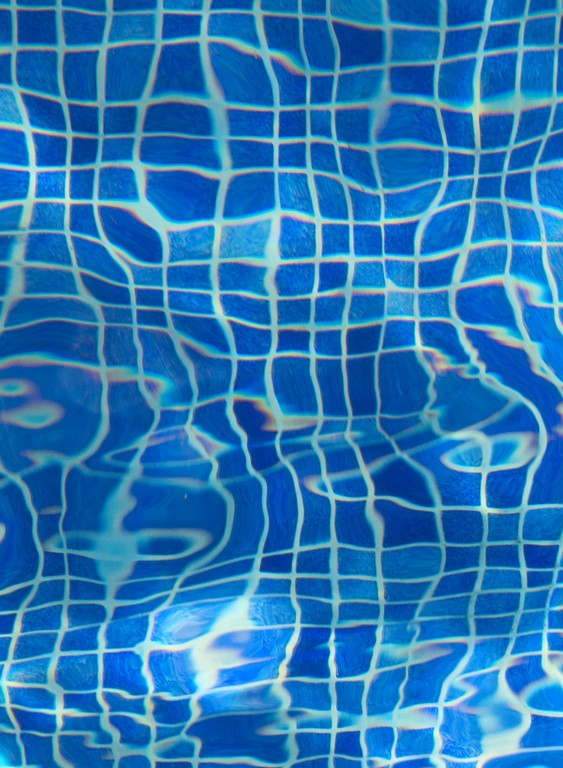 The great Hippocrates noted the healing benefits and disease-preventing properties of silver, and his path has been followed by countless medical practitioners ever since. Nineteenth-century American pioneers crossing the Great Basin treated dysentery with silver and put copper and silver coins in water and milk containers to slow bacterial growth.
The great Hippocrates noted the healing benefits and disease-preventing properties of silver, and his path has been followed by countless medical practitioners ever since. Nineteenth-century American pioneers crossing the Great Basin treated dysentery with silver and put copper and silver coins in water and milk containers to slow bacterial growth.
The 1800s also saw the use of silver-thread sutures in binding surgical wounds and of silver nitrate solutions for prevention of newborn blindness and as a treatment for typhus and anthrax.
By 1785, ozone gas had been observed as an emanation from electrical machinery. By 1886, the ability of this material to disinfect polluted water was recognized. In 1887 the first public pool in the United States opened in Brookline, Mass., and had an ozone-based water-treatment system.
By 1891, German scientists had definitively proved ozone’s effectiveness in destroying bacteria. In 1893, the first municipal water system treated by ozone was initiated in the Netherlands.
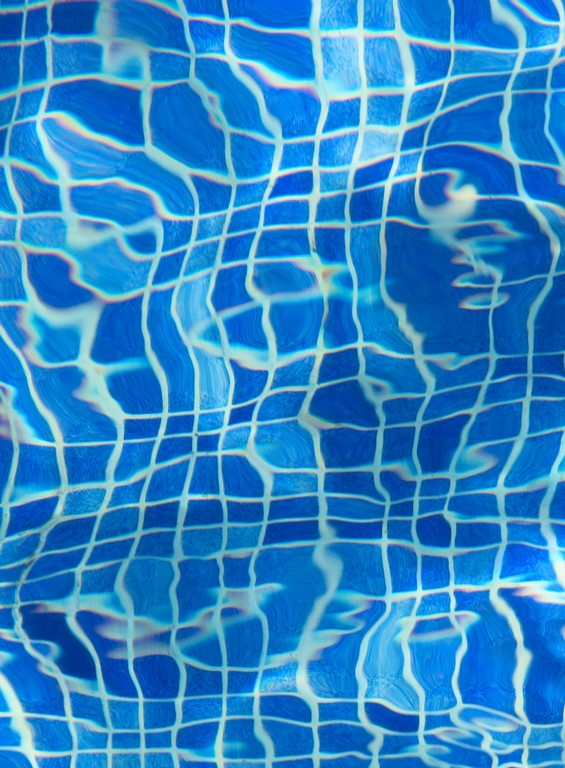 The Amish seem always to have known about hydrogen peroxide’s utility in water treatment and in numerous agricultural applications. They sprayed it on their string beans after the first harvest and were pleased by additional pickings on the same plants later on. They sprayed it on their cabbage, cauliflower and potatoes and noticed that bugs left them alone. They saw it as safer than any available pesticide in the diluted form they applied and observed that it harmed neither animals nor children.
The Amish seem always to have known about hydrogen peroxide’s utility in water treatment and in numerous agricultural applications. They sprayed it on their string beans after the first harvest and were pleased by additional pickings on the same plants later on. They sprayed it on their cabbage, cauliflower and potatoes and noticed that bugs left them alone. They saw it as safer than any available pesticide in the diluted form they applied and observed that it harmed neither animals nor children.
The application of these technologies to swimming pools and spas came along much later – indeed, not until the 1980s, when some spas started being equipped with ozonators. (Today, of course, every major spa manufacturer includes an ozone option as part of their equipment packages.) On a much more personal level, I was called a snake-oil salesman when I rode around treating my pools out of 500-pound containers of hydrogen peroxide, but now it’s sold in just about every pool store in the country.
And now the time has come: To have real, progressive change in the swimming pool industry, we must begin working with mechanical systems that produce more than the sum of their individual parts and replicate the perfect systems that the human body and nature have developed.
SYSYEM COMPONENTS
Below is a long list of active, available systems I’ve examined, seriously considered or used through the years. The list is comprehensive, and I now draw from it item by item based on the specific needs of the project at hand with respect to factors including vessel size, anticipated use, sun and wind exposure, my clients’ desires and, of course, their budgets.
q Ozone
This disinfectant/oxidizer eliminates chloramines and kills all known bacteria, viruses, cysts, yeasts, molds and mildew while also reducing most chlorinated hydrocarbons. In my systems, corona-discharge ozonators are usually but not exclusively the way to go: Their high-voltage generation produces antimicrobial oxidation that sanitizes and disinfects and is highly effective against biofilm; reduces halogen levels; eliminates disinfection byproducts; and prevents infectious outbreaks.
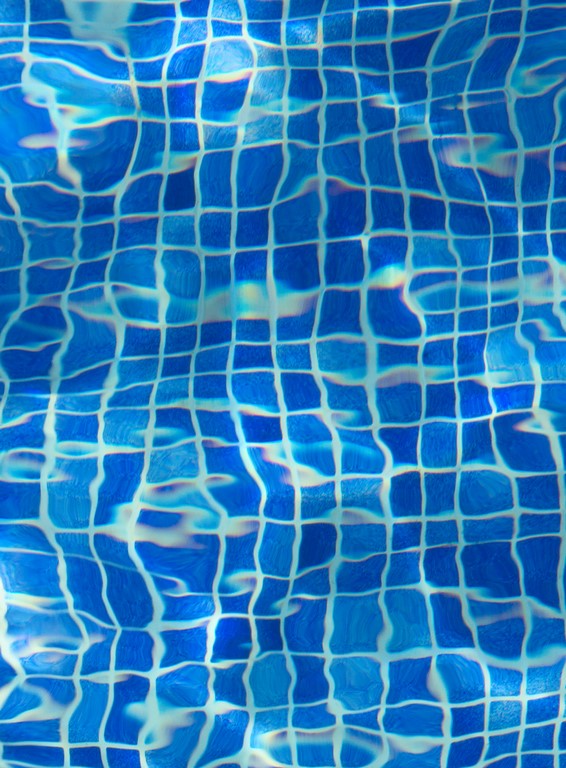 Ozone is 10,000 times more effective than chlorine in killing a range of common pool pathogens and 25 times faster than hypochlorous acid in killing the dangerously commonE. colibacterium.
Ozone is 10,000 times more effective than chlorine in killing a range of common pool pathogens and 25 times faster than hypochlorous acid in killing the dangerously commonE. colibacterium.
Finally, ozone is also a microflocculent that clumps inorganic and organic contaminants together during the oxidation process.
qMinerals
There are three possibilities I’ve explored here, including cartridges charged with combinations of colloidal silver, coated limestone and silver chloride; cartridges that use calcium and magnesium ions to act as polarized magnets that transmit energy to ions already forming tartar, thereby dissolving it; and units using zinc oxide, which kills 15 strains of candida, staphylococci and streptococci bacteria, pyocyaneus and most infectious bacteria.
qIonization
A toxin-free approach can be served by up to three forms of ionization, including systems in which low-voltage D.C. currents activate copper, silver and zinc ions, thereby releasing into the water chemical agents that effectively kill algae, bacteria, fungi and viruses. There’s also a system in which mineral colloids, including zinc, sacrifice themselves to inhibit galvanic corrosion and stains while also providing some water-sanitizing effects.
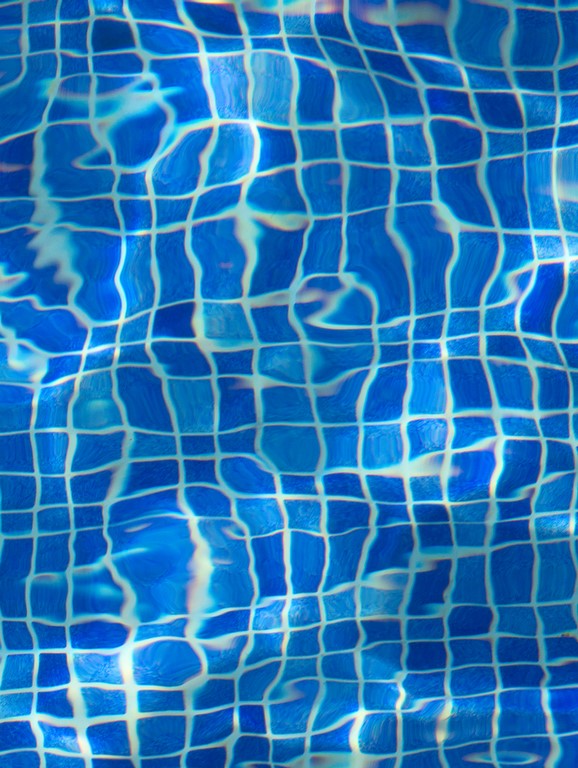 In addition, there’s a silica-sand filter saturated with colloidal minerals that are activated as water passes through the very fine metal particles. I’ve also worked with another unit in which an ionizing capsule produces positively charged copper and silver ions that form an electrostatic bond and disrupt microorganisms’ cell walls. Palladium, zinc and carbon are part of the essential mineral combination here: Their positive ions attack the sulfur-containing amino-acid residues produced through photosynthesis.
In addition, there’s a silica-sand filter saturated with colloidal minerals that are activated as water passes through the very fine metal particles. I’ve also worked with another unit in which an ionizing capsule produces positively charged copper and silver ions that form an electrostatic bond and disrupt microorganisms’ cell walls. Palladium, zinc and carbon are part of the essential mineral combination here: Their positive ions attack the sulfur-containing amino-acid residues produced through photosynthesis.
qAdvanced Oxidation
In these potent sanitizing and disinfecting systems, aqueous ozone is exposed to ultraviolet light and decomposes into hydrogen peroxide – which continues to react with the ultraviolet light in turn to create hydroxyl free radicals. These hydroxyls are potent, fast-acting disinfectants that, when combined with split oxygen molecules, create oxygen radicals that can safely be injected into pool plumbing along with a residual level of hydrogen peroxide.
qAdvanced Filtration
This is one of the areas where conventional thought needs complete revision. What I’m pursuing is about more than just one form of filtration and moves beyond passively entrapping micron-scale debris, algae, bacteria and other contaminants for backwashing to make filtration an active component in creating toxin-free pools and spas.
The options start with a high-oxidation media that, through catalytic reaction, remove iron, manganese and hydrogen sulfide from the water. There’s also the shower-water-recycling system invented for the U.S. space program: It uses an inline microfilter charged with nanocapsules that remove 99.9 percent of the viruses, bacteria, toxins, metals and oils that flow through the system.
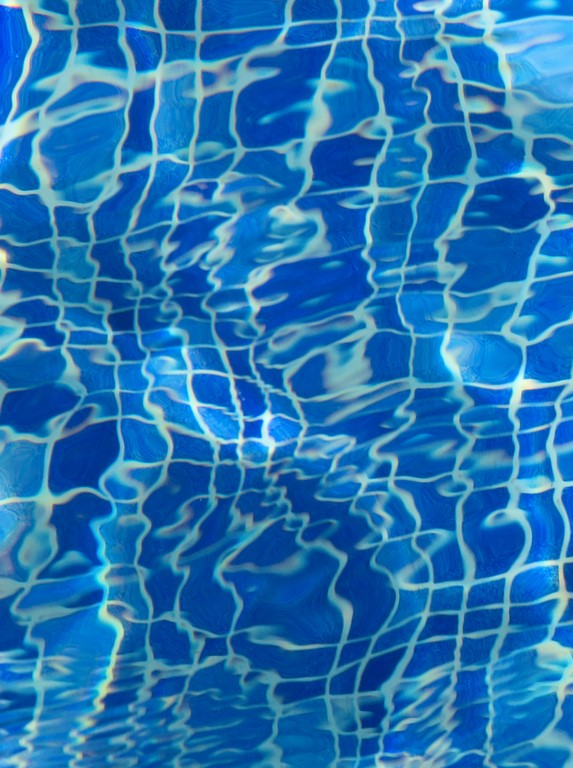 Another approach is a modular wastewater treatment system that removes arsenic, heavy metals, toxic organics, ammonium and a broad range of contaminants through screening and filtration; ozone disinfection and ion exchange; and liquid/solid separation through microfiltration. Advanced oxidation through a gas/liquid mass-transfer reactor is another possibility here, along with ozone-generation and ion-exchange units using zeolites, a material that polishes water while destroying ammonia-related molecules.
Another approach is a modular wastewater treatment system that removes arsenic, heavy metals, toxic organics, ammonium and a broad range of contaminants through screening and filtration; ozone disinfection and ion exchange; and liquid/solid separation through microfiltration. Advanced oxidation through a gas/liquid mass-transfer reactor is another possibility here, along with ozone-generation and ion-exchange units using zeolites, a material that polishes water while destroying ammonia-related molecules.
Active carbon fusion is another possibility as well. Here, a process is used to fuse activated charcoal to metallic silver atoms, creating a material that clears away suspended particulates, dissolved material and bacteria while interfering with algae growth, fighting corrosion and improving water clarity.
High performance filtration using regular activated carbon removes hard-water contaminants and extracts dissolved substances, human secretions, heavy metals, trace nitrates, sulfates, nitrogen, pesticides, hydrocarbons, colorants, detergents and chlorinated organic residues via a micron-scale pre-filter (for rust, various sediments and silt); a soft-grid filter (for scale prevention); copper, zinc and minerals (to reduce levels of chlorine, water-soluble heavy metals, bacteria and algae); and activated carbon (for herbicides, pesticides and other chemical compounds). The filter unit has a bypass system to capture any remaining sediment and organic particles (down to fractions of a micron) and an ultraviolet light chamber for additional bacteria and virus protection.
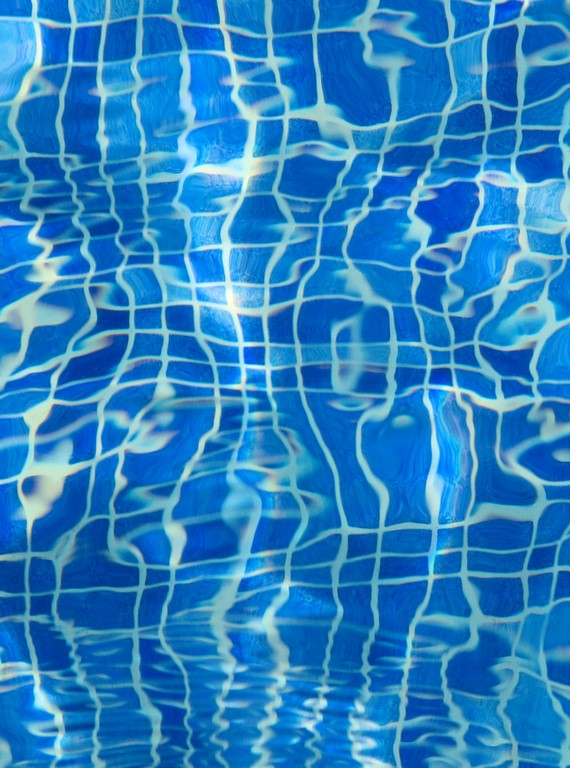 There are catalytic reactors used to soften hard water and remove dissolved substances, human secretions, heavy metals, trace nitrates, sulfates, nitrogen-type pesticides, hydrocarbon, colorants, detergents and chlorinated organic residues. And finally, there are regenerative media systems that use perlite-coated media capable of filtering out particles at the one-micron level. The virtues of this system have to do with convenience: high flow rates with long intervals between backwashes.
There are catalytic reactors used to soften hard water and remove dissolved substances, human secretions, heavy metals, trace nitrates, sulfates, nitrogen-type pesticides, hydrocarbon, colorants, detergents and chlorinated organic residues. And finally, there are regenerative media systems that use perlite-coated media capable of filtering out particles at the one-micron level. The virtues of this system have to do with convenience: high flow rates with long intervals between backwashes.
qLiquids
The toxin-free pool is notchemical-free: We still need ways to remove mono- or copolymer flocculants, metals, phosphorus, biosludge, soaps and other particulates that, left unchecked, result in scum lines, foam and stains.
One of these liquid products is hydrogen peroxide, an oxidizer that is more active than chlorine and will also neutralize chlorine. Its extra oxygen atom enables it to burn living organics, inorganic oils, sludges and biofilms and kill bacteria and viruses.
We also need to add coagulants that make tiny particles mass together for easier removal by filtration; flocculants to bind solids together, clarify the water, break down scale and ensure more complete filtering; sequestering agents to keep metals in suspension; chelating agents that bind up metal ions and keep them from reacting with other materials in the water; and clarifiers (generally polyacyrlimides, but in a non-toxic version!) that consist of crustacean shells that gather up contaminants in long-chain polymeric molecules, using their positively charged hooks to form neutral, buoyant flocs and effectively removing suspended solids from liquids.
qEnzymes
These materials react with non-living organic waste, speed up chemical reactions and accelerate the breakdown of those wastes. Those I’ve used have included very aggressive industrial enzymes that eat each other after a very short active life and are used to target wastes in a specific category – for our purposes, fats and oils.
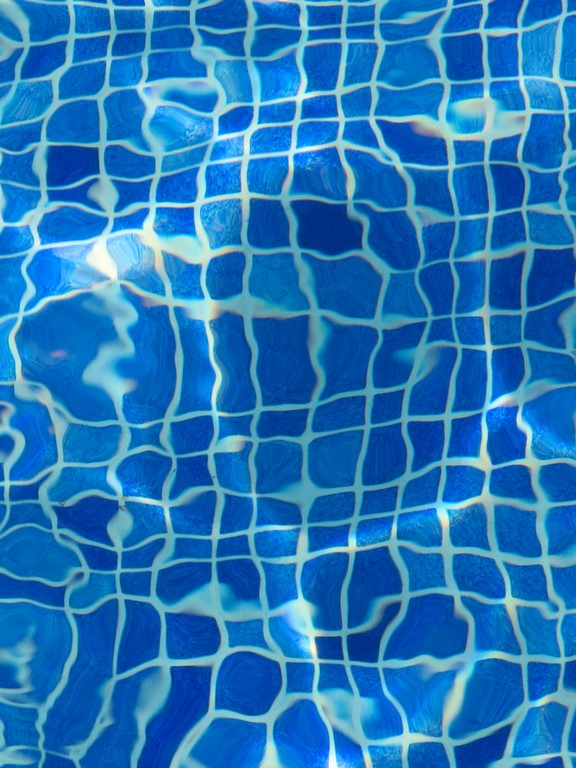 The most common enzyme in use is a broad-spectrum variety that is stable and has a shelf life measured in years. These products contain a range of co-enzymes that catalyze thousands of helpful chemical reactions. Finally, for pools treated using conventional chemistry, there’s a non-toxic, microbe-decomposing enzyme to protect cyanuric acid levels.
The most common enzyme in use is a broad-spectrum variety that is stable and has a shelf life measured in years. These products contain a range of co-enzymes that catalyze thousands of helpful chemical reactions. Finally, for pools treated using conventional chemistry, there’s a non-toxic, microbe-decomposing enzyme to protect cyanuric acid levels.
qBorates
A corrosion and scale inhibitor, borates buffer pH and decrease the solubility of carbon dioxide, thereby starving algae spores.
qWaves
There are three wave forms useful in reducing levels of scale, total dissolved solids, biosludge and phosphates. These are magnetism, which chelates total dissolved solids and thereby slows scaling while stimulating ionization processes; sonic systems that use ultra-high-frequency radio transmissions to break down calcium bicarbonate and magnesium bicarbonate crystals into carbonate – a material that does not bind to surfaces; and ultraviolet waves that inactivate the DNA of bacteria cocysts and pathogenic microorganisms without leaving residual disinfection byproducts. Germicidal ultraviolet light also alters and disrupts algae, bacteria, viruses, mold spores and protozoa, breaks down chloramines and is partially effective against cryptosporidium.
qBiofiltration
Plants have long been used to disinfect water and keep fish happy and healthy in ponds. In recent years, larger bog-filtration systems have also been used in creating the class of watershapes known as natural swimming pools. These systems work through epuration, using plants that encourage the growth of beneficial bacteria, bind phosphates and have root systems that effectively absorb, filter and clarify water. In addition, there are large, phosphorus-binding filter-grid systems that also have carbonators.
SYSTEM EXPLORATION
Through all my years of research and experimentation related to toxin-free pools, my company, Green Pastures Group (Topanga, Calif.), has been offering its clients systems that rely on three synergistic heavy hitters drawn from categories listed above – namely, advanced oxidation, ionization and advanced filtration.
Our pools and spas use the advanced oxidation system manufactured by Clear Comfort (Boulder, Colo.); the cathodic silver/copper/zinc ionization system from Almost Heaven Group (Renick, W.Va.); the submersible water-activated silver/copper/zinc/palladium/carbon ionizer from AquaSmarter (Niagara Falls, Ontario, Canada); and the fused carbon/silver advanced filtration system from Cartis (Brignais, France).
We complement and support these systems with the IntelliChem smart pH controller from Pentair (Sanford, N.C.), the zinc-anode electrolysis inhibitor from Pool Tool (Ventura, Calif.) and liquid hydrogen peroxide (27 to 35 percent concentration) from Leisure Time (Atlanta, Ga.).
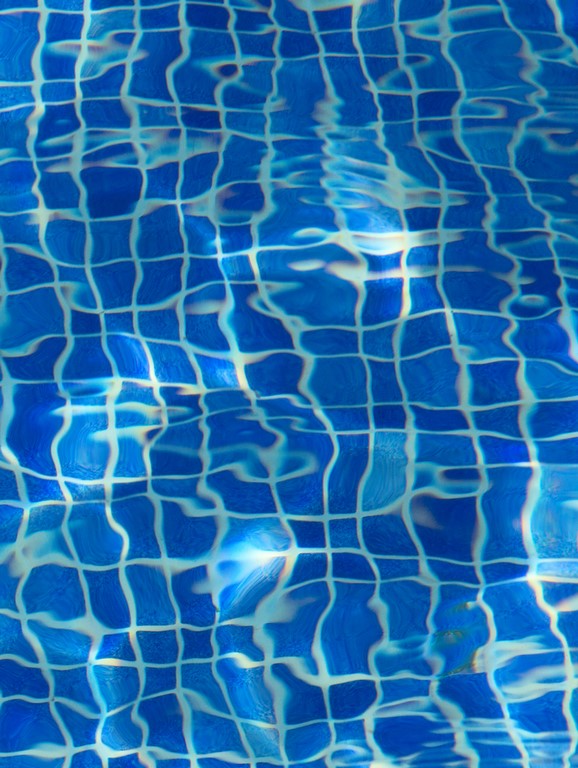 For waterfeatures that involve human contact with water but without immersion, the program is altered just a bit: We use either the advanced oxidation system from Clear Comfort or the HydroRite system from Hayward (Elizabeth, N.J.); a corona-discharge ozonator from either Clearwater Tech (San Luis Obispo) or DEL Ozone (based in San Luis Obispo and now owned by CMP of Newnan, Ga.); hydrogen peroxide from Leisure Time; and enzymes from Natural Chemistry (Norwalk, Conn.).
For waterfeatures that involve human contact with water but without immersion, the program is altered just a bit: We use either the advanced oxidation system from Clear Comfort or the HydroRite system from Hayward (Elizabeth, N.J.); a corona-discharge ozonator from either Clearwater Tech (San Luis Obispo) or DEL Ozone (based in San Luis Obispo and now owned by CMP of Newnan, Ga.); hydrogen peroxide from Leisure Time; and enzymes from Natural Chemistry (Norwalk, Conn.).
In construction, I (and many other builders) use the newly developed colloidal-silicate, flexible, cementitious, multi-layered, LEED-Certified waterproofing systems – from Basecrete USA (Sarasota, Fla.), Dry-Treat (Andover, Mass.) and Valcon Industries (Sarasota) – and concrete substrate impregnators and densifiers.
These material technologies greatly assist the maintenance and life of plaster, stone, tile, grout, and all concrete watershape elements and contribute to overall water quality by lowering levels of total dissolved solids and water hardness while mitigating many of the leaching, delamination and water-loss issues associated with cementitious surfaces. All in all, using these materials assists in sustaining toxin-free watershapes.
One key limitation to development of toxin-free approaches is the general unfamiliarity and lack of curiosity within the service community about these systems and a tendency I’ve observed of a willingness to trash installed systems and “help their clients out” by converting toxin-free pools back to chlorine-treated vessels. This is an issue that must be dealt with through education and exposure, but it’s unlikely the situation will change until more designers and builders follow this path and pull service professionals along in greater numbers.
My colleague Steve Staples (Chlor-Free Co., Simi Valley, Calif.) maintains and services my non-toxic pool systems and reports meeting with doubt and skepticism among his peers when he suggests the importance of weaning ourselves from chlorine addiction and moving along to the new approach to water treatment he now accepts and endorses for the good health of his clients.
***
As you evaluate and absorb the contents of these three articles, think about the perfect systems at play in nature and consider the fact that even our great galaxies thrive through a grand-scale form of plumbing: If not evenlightcan escape the gravity of a black hole, it’s a small step to conjecture that even the great cosmos has galactic vortex drains that scoop up masses of cosmic debris (and entire suns!) in pursuit of purification processes required in all areas of the physical universe.
I know that I am still essentially a lone wolf in these perceptions. But every day, with every installation, I’m becoming a morehopefullone wolf. Care to join me on the new frontier?
John Cohenis owner and founder of Green Pastures Group, a watershaping and landscape-design firm based in Topanga, Calif. Cohen’s career began in working with his father, planting trees and installing landscapes for upscale properties and public spaces in southern California. He founded his own firm in 1975 and has since won a range of awards and appeared on episodes of design-oriented television shows, including “Backyard Nation” on The Learning Channel. Mostly self-taught, Cohen also studied Chinese gardening at UCLA. A pioneer in the field of non-toxic water-treatment systems, his projects include highly stylized and distinctive watershapes and landscape compositions for upscale clients throughout southern and central California, including the Beverley Hills Hotel. His work has also appeared on the cover ofArchitectural Digest.









